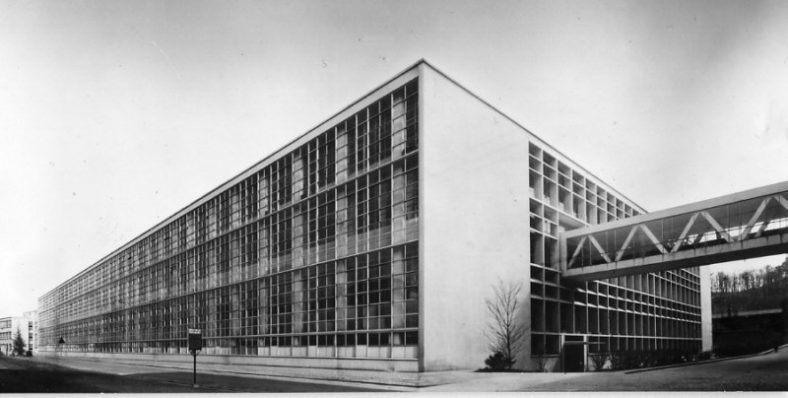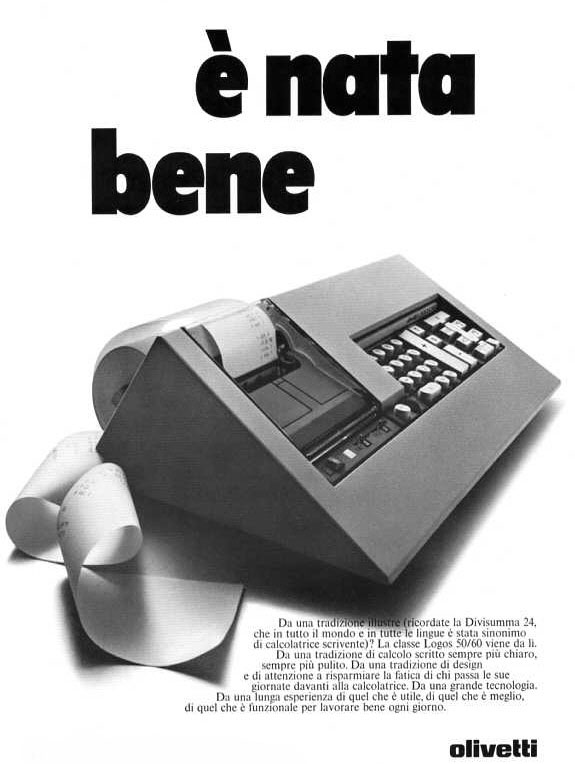When we have started talking about the ways in which, old media infrastructures meets new technologies, and how they begins to shape each other, suddenly a pretty fitting example came to my mind. If we think about the recent years, Italy is not a country often mentioned in the environment of digital and technological innovation, nowadays the U.S. and the asian countries incarnate the “north star” in the field of technology development.
But, if we go back a few years, there was a time, between the 30s and the 60s, when a small company in the north of Italy was leading the progress of media technologies and communication: Olivetti.

When, in 1908, the company was founded, it was identified as “The first national typewriter manufacturer” and the production of typewriters remained the “core-business” of the company for many years, mostly until the 60s. Besides the production of the “traditional” typewriters, the company had several “top-selling” products such as calculators and accountant machines, sold both in the internal and on the international market.
During the years, and thanks to the the innovations in the electronic field, the Olivetti products started to become less mechanical and more electronic to keep the pace with the booming progress, and there was when the problems started to arise.


During the second half of the sixties the company tried to compete, without success, with the Japanese production of electronic calculators and also tried to release on the market a new innovative product: the first personal computer.
The “Programma 101” was presented at the New York’s BEMA exhibition in 1965 and was a huge “public success”, the machine it was a desk automatic calculator, non nearly similar to modern computers but it was a big leap forward both for the technological innovation as for the revenues of the company.
During the next years the company struggled to keep the pace of the U.S. and Japanese companies but still managing to put on the market some “top-selling” products such as the “Olivetti ET101” the world’s first electronic typewriter in 1978, in 1979 the “Olivetti Advanced technology center” was opened in Cupertino, CA, just two blocks away from the Apple headquarter, and during te 80s the company knew a new period of success also thanks to the collaboration with the American company AT&T, becoming one of the most important European manufacturers of personal computers.
During the 90s and with the beginning of the rise of mobile communications the lack of funding and the crisis of European and Italian markets prevented the company to keep the pace with the spreading of this new technologies starting a quick decline, but the company contribution to the world of technology development was not yet at his end.
At the beginning of the new century the Olivetti Company together with the telecommunication company “Telecom Italia” founded and opened the “Interaction Design Institute Ivrea”, a graduate design program in the field of Interaction Design, The school operated from 2001 to 2005 and was involved in many projects that became relevant later in the design world: among them, the prototyping boards “Wiring” and “Arduino”, the graphics software prototyping environment “Processing”.


Besides the iconic design of their products, Olivetti always managed to maintain a clear and recognisable “corporate image” both in their products as in their infrastructures. Starting from the first iconic “red brick factory” to the realisation of their retail stores, a design on which Apple has based the one of their “Apple Stores”. And again their production plants all over the world and also the “Blue House”, home of the Interaction Design Institute and build for Adriano Olivetti in order to open a research center.



The Olivetti story is one, amongst many other, “forgotten” stories of the world of media, from the printed paper since the invention of the personal computer, a small player in a world of gigantic companies, but that has managed, here and here, to influence forever the world of technology, design and media.

